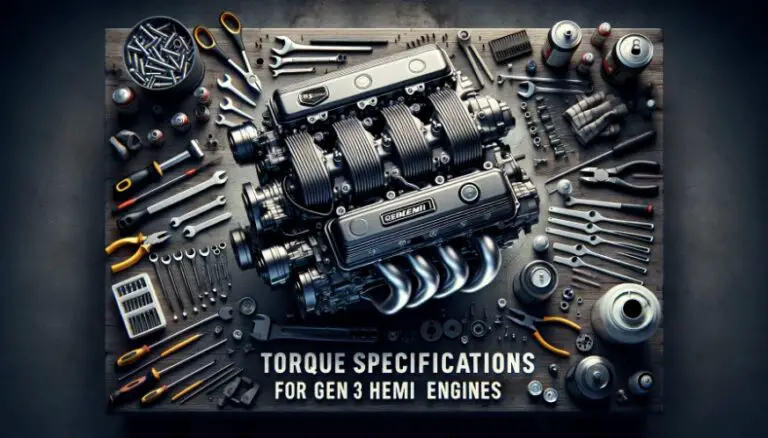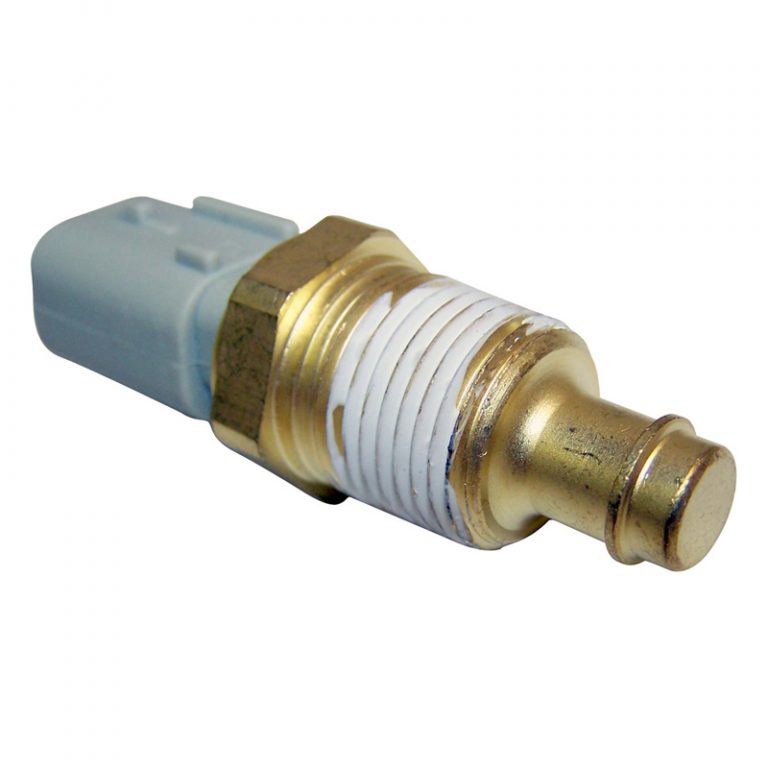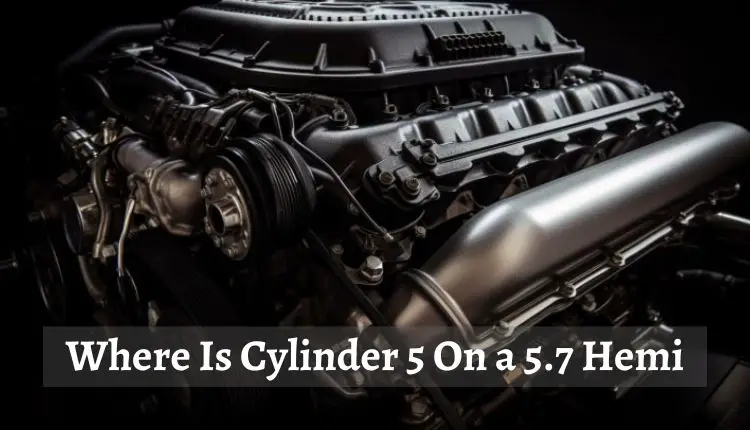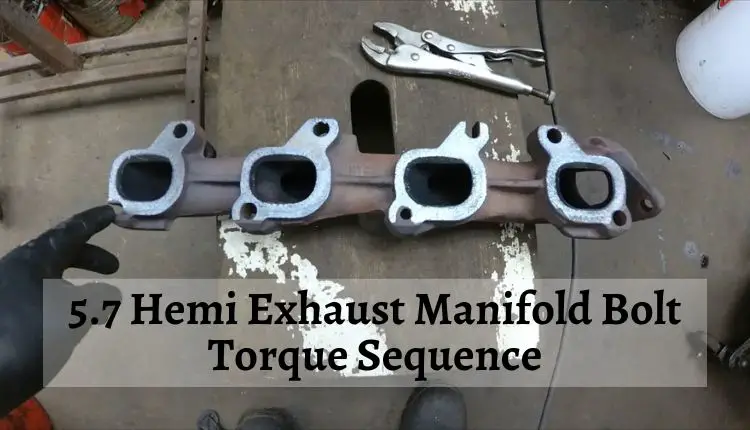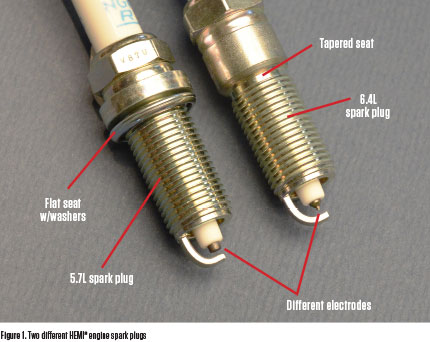5.7 Hemi Cylinder 5 Misfire
Are you experiencing a 5.7 Hemi Cylinder 5 misfire? Misfires can lead to decreased engine performance and even damage if not addressed promptly. Common causes of misfires in Cylinder 5 include issues with spark plugs, faulty ignition coils, fuel injector problems, engine compression issues, and vacuum leaks.
To solve the problem, you’ll need to diagnose the misfire, identify the cause, and apply the appropriate fix. Regular maintenance and monitoring of engine performance can help prevent future misfires and keep your vehicle running smoothly.
The 5.7 Hemi engine is a popular and powerful V8 engine used in various Chrysler, Dodge, and RAM vehicles. Known for its performance and reliability, the 5.7 Hemi is a preferred choice for many car enthusiasts. However, as with any engine, issues can arise, including misfires in specific cylinders, such as Cylinder 5.
Importance of addressing misfires
Misfires can lead to several problems, including reduced engine performance, poor fuel economy, increased emissions, and potential damage to the engine or catalytic converter. Timely diagnosis and resolution of misfires are crucial to maintaining the engine’s longevity and ensuring a smooth driving experience.
Overview of common causes
There are several potential causes of a misfire in Cylinder 5 of a 5.7 Hemi engine. Common issues include problems with the spark plugs, ignition coils, fuel injectors, engine compression, and vacuum leaks. Identifying the specific cause is the first step in resolving the misfire and restoring your engine’s performance.
Hemi 5.7 P0305 Cylinder 5 Misfire – Dead Cam/Lifter
Diagnosing Cylinder 5 Misfire
Symptoms of misfires
Misfires often manifest themselves in various ways, including:
- Rough idling or vibrations
- Reduced engine performance or power
- Poor fuel economy
- Check engine light illumination
- Engine stalling or hesitation
Diagnostic tools and methods
To accurately diagnose a Cylinder 5 misfire, you can use a variety of diagnostic tools and methods:
- On-board diagnostics (OBD) scanner: Connect an OBD scanner to your vehicle’s OBD port to read any stored fault codes related to the misfire. A specific code (e.g., P0305) may indicate a misfire in Cylinder 5.
- Visual inspection: Perform a visual inspection of the engine, focusing on the components related to Cylinder 5, such as the spark plugs, ignition coils, and fuel injectors.
- Compression test: A compression test can help identify issues with engine compression that may contribute to a misfire.
Importance of pinpointing the correct cylinder
Properly identifying the misfiring cylinder is crucial, as it enables you to focus your troubleshooting efforts on the specific components related to that cylinder. This can save time and resources while ensuring a more accurate diagnosis and repair.
Common Causes of Misfire in Cylinder 5
Spark plug issues
Faulty or worn spark plugs can cause a misfire in Cylinder 5. Spark plugs are responsible for igniting the air-fuel mixture in the combustion chamber. If a spark plug is not functioning correctly, it may not provide the necessary spark, leading to a misfire. Common spark plug issues include:
- Worn or damaged electrodes
- Excessive carbon buildup
- Incorrect spark plug gap
- Cracked or damaged insulator
Faulty ignition coil
The ignition coil is responsible for converting the low-voltage electricity from the battery into high-voltage power for the spark plugs. A faulty ignition coil can cause a weak or inconsistent spark, leading to a misfire in Cylinder 5. Symptoms of a bad ignition coil include:
- Intermittent misfires
- Rough idling
- Poor engine performance
- Check engine light illumination
Fuel injector problems
Fuel injectors deliver the correct amount of fuel to the combustion chamber. A malfunctioning fuel injector can lead to an incorrect fuel-to-air ratio, causing a misfire in Cylinder 5. Common fuel injector problems include:
- Clogged or dirty fuel injectors
- Leaking fuel injectors
- Faulty electrical connections
Engine compression issues
Engine compression is vital for creating the necessary pressure in the combustion chamber. If there is a loss of compression in Cylinder 5, it can result in a misfire. Common causes of engine compression issues include:
- Worn or damaged piston rings
- Damaged cylinder walls
- Leaking or damaged valves
- Blown head gasket
Vacuum leaks
Vacuum leaks occur when there is unintended air entering the engine, causing an incorrect fuel-to-air mixture. A vacuum leak near Cylinder 5 can lead to a misfire in that cylinder. Common sources of vacuum leaks include:
- Damaged or loose vacuum hoses
- Leaking intake manifold gaskets
- Damaged or cracked intake components
See Also:
- Dodge 4.7 Misfire No Codes
- 6.6 Duramax Cylinder Numbers
- 6.0 Powerstroke Cylinder Order
Troubleshooting and Fixes
Inspecting and replacing spark plugs
To address spark plug issues related to a Cylinder 5 misfire, follow these steps:
- Locate the spark plug for Cylinder 5 and remove it using a spark plug socket and ratchet.
- Inspect the spark plug for signs of wear, damage, or excessive carbon buildup.
- Measure the spark plug gap and compare it to the manufacturer’s specifications. Adjust the gap if necessary.
- If the spark plug is damaged or worn, replace it with a new one.
- Reinstall the spark plug and ensure it is properly torqued according to the manufacturer’s recommendations.
Testing and replacing ignition coils
To troubleshoot and fix a faulty ignition coil, follow these steps:
- Locate the ignition coil for Cylinder 5 and disconnect the electrical connector.
- Use a multimeter to measure the resistance of the ignition coil and compare it to the manufacturer’s specifications.
- If the resistance is out of specification, replace the ignition coil with a new one.
- Reconnect the electrical connector and ensure the coil is properly seated.
Cleaning or replacing fuel injectors
To address fuel injector problems related to a Cylinder 5 misfire, follow these steps:
- Locate the fuel injector for Cylinder 5 and disconnect the electrical connector.
- Remove the fuel injector from the engine by following the manufacturer’s removal procedures.
- Inspect the fuel injector for signs of damage or clogging.
- If the injector is clogged, clean it using a fuel injector cleaning solution or an ultrasonic cleaner.
- If the injector is damaged or cleaning does not resolve the issue, replace it with a new one.
- Reinstall the fuel injector and reconnect the electrical connector.
Checking and addressing engine compression problems
To troubleshoot and resolve engine compression issues related to a Cylinder 5 misfire, follow these steps:
- Perform a compression test on Cylinder 5 by following the manufacturer’s testing procedures.
- Compare the test results to the manufacturer’s specifications.
- If compression is low or inconsistent, further investigate the cause (e.g., piston rings, cylinder walls, valves, or head gasket) and repair as needed.
Locating and repairing vacuum leaks
To locate and fix vacuum leaks that may be causing a Cylinder 5 misfire, follow these steps:
- Inspect the vacuum hoses, intake manifold gasket, and intake components near Cylinder 5 for signs of damage or leaks.
- Use a vacuum gauge or a smoke machine to help identify the source of the leak.
- Repair or replace the damaged components as needed to resolve the vacuum leak.
Preventing Future Misfires
Regular maintenance
To prevent future misfires and maintain optimal engine performance, adhere to your vehicle’s recommended maintenance schedule. Regular maintenance tasks include:
- Changing engine oil and filters
- Replacing spark plugs at specified intervals
- Inspecting and replacing ignition coils if needed
- Cleaning or replacing fuel injectors as necessary
- Inspecting and maintaining vacuum hoses and intake components
Monitoring engine performance
Keep an eye on your engine’s performance to detect early signs of potential misfires or other issues. Monitoring engine performance involves:
- Paying attention to changes in engine behavior, such as rough idling, hesitation, or reduced power
- Checking for any illuminated warning lights on your dashboard, such as the check engine light
- Regularly reviewing your vehicle’s fuel economy to detect any sudden drops
Identifying early warning signs
By recognizing early warning signs, you can address potential misfires before they escalate into more significant problems. Some early warning signs include:
- Occasional engine stuttering or hesitation
- Slightly rough idling or vibrations
- Unusual engine noises, such as knocking or pinging
- An intermittent check engine light
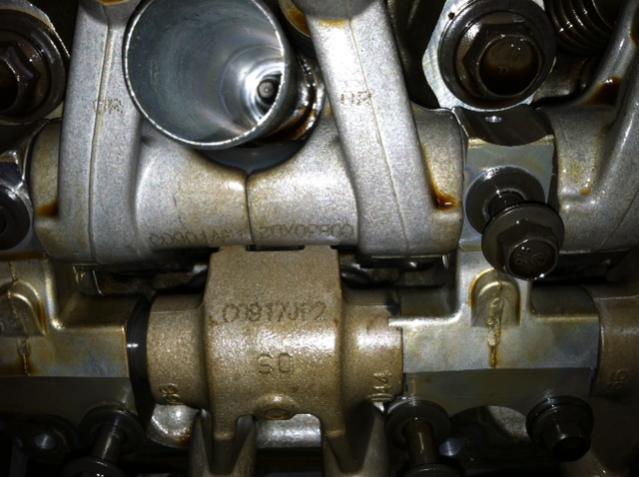
Credit: dodgeforum.com
FAQs
What is the most common cause of a 5.7 Hemi Cylinder 5 misfire?
While various factors can contribute to a misfire in Cylinder 5, spark plug issues are often the most common cause. Inspecting and replacing the spark plug can help resolve the issue in many cases.
Can I continue driving with a 5.7 Hemi Cylinder 5 misfire?
Driving with a misfire can cause further damage to your engine and other components, such as the catalytic converter. It is recommended to diagnose and repair the misfire as soon as possible to avoid potential damage and costly repairs.
How do I diagnose a 5.7 Hemi Cylinder 5 misfire?
You can diagnose a Cylinder 5 misfire using an OBD scanner to read fault codes, visually inspect the engine components, or conduct a compression test. Identifying the correct cylinder and the cause of the misfire is crucial for effective troubleshooting.
How often should I replace the spark plugs in my 5.7 Hemi engine to prevent misfires?
Spark plug replacement intervals can vary depending on the specific vehicle and spark plug type. Consult your owner’s manual for the manufacturer’s recommended spark plug replacement interval to prevent potential misfires.
Can a vacuum leak cause a 5.7 Hemi Cylinder 5 misfire?
Yes, a vacuum leak can cause a misfire in Cylinder 5 by introducing unintended air into the engine, disrupting the fuel-to-air mixture. Inspecting and repairing vacuum leaks can help resolve the misfire.
Check Engine light on, cylinder 5 misfire
Conclusion
A misfire in Cylinder 5 of a 5.7 Hemi engine can be caused by various issues, including problems with spark plugs, ignition coils, fuel injectors, engine compression, and vacuum leaks. Diagnosing and pinpointing the specific cause is essential for effective troubleshooting and repair.
Regular maintenance, monitoring engine performance, and identifying early warning signs can help prevent future misfires and keep your vehicle running smoothly.
Addressing misfires in a timely manner is crucial to maintaining your engine’s health and performance. Ignoring misfires can lead to more severe problems, such as damage to the engine or catalytic converter, and reduced fuel economy.
By taking a proactive approach and dealing with misfires as they arise, you can prolong the life of your 5.7 Hemi engine and enjoy a smoother driving experience.
Read Also:


